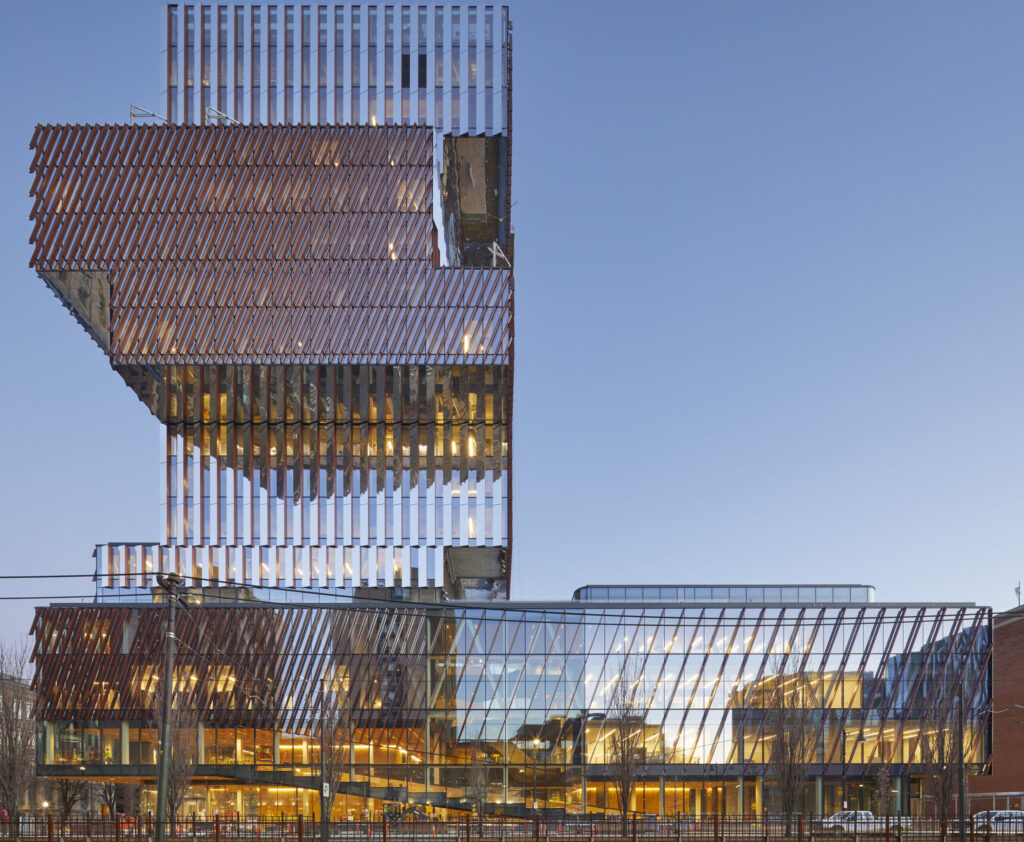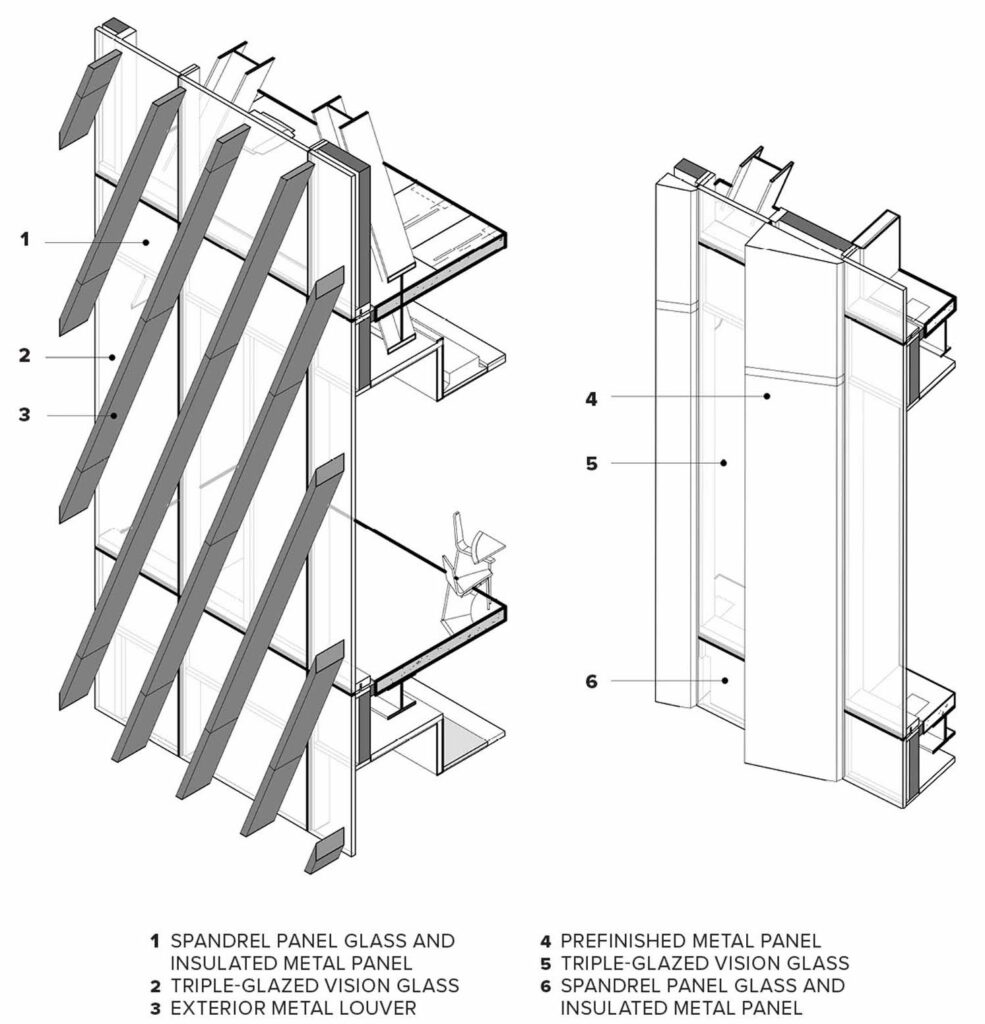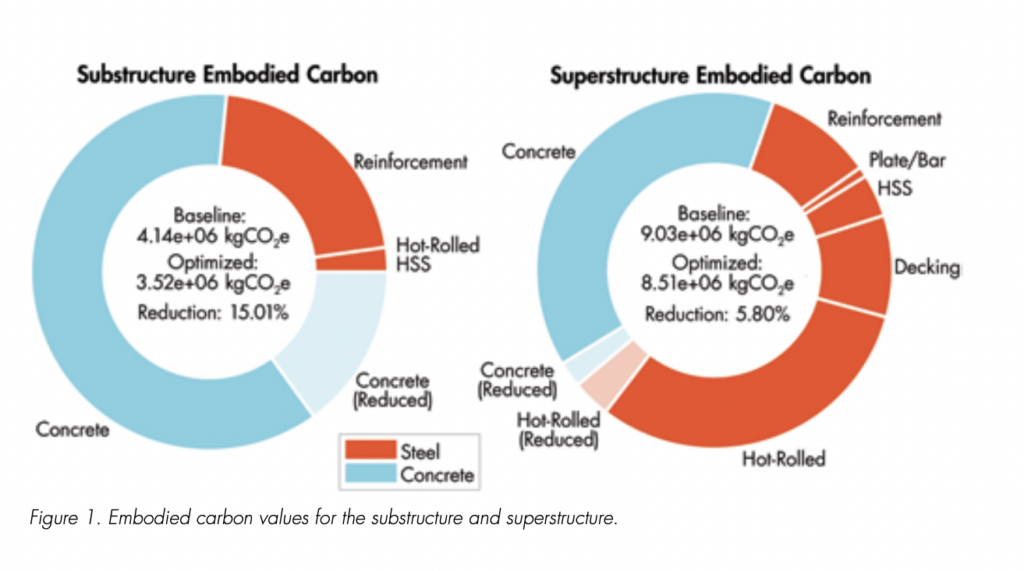“A Jenga tower… a stack of books… a game of Tetris…” are some of the reactions to the look of the latest addition to Boston’s skyline, but this oddly shaped building is hiding a range of smart, efficient, and sustainable elements that have allowed it to achieve its Net Zero buildings status.
Opening to students recently, Boston University’s (BU) new Center for Computing & Data Sciences is 19 stories tall and 345,000-square-foot, making it the University’s tallest building and the largest 100% fossil-fuel-free building in the city. BU president claimed that the iconic structure has been created as “a conversation starter” and beyond the bold aesthetic, the building’s green features trigger a range of discussions around net-zero energy buildings.
The $305 million building is the result of a competition held in 2012 in which a long list of about 50 firms was whittled down to five competitors and was won by Toronto-based KPMB.
Every net zero buildings project has been forced to find ways to excel in renewable energy generation, operational efficiency, and has emerged in an environment that enables such development. In this research note, we investigate how the BU Center for Computing & Data Sciences reached its net zero goals, to help us envision the future evolution of sustainable commercial real estate.

Energy Generation
While the new BU building presents a wide range of advanced efficiency features (discussed below), the project’s key differentiator is its energy-generating capacity, namely its inclusion of on-site geothermal energy. 31 geothermal wells of closed loop boreholes that extend 1500 below ground combine with high-efficiency concentric heat exchangers to maximize the energy extraction of the ground source heat pumps
Due to space constraints on the site, the bores needed to go much deeper than a typical geothermal system to achieve the projected 300 tons of heating and cooling capacity. However, by locating 27 of the bores outside the building footprint, only four bores directly underneath, there was less impact to the deep foundation excavation and construction time was reduced. Dennis Carlberg is the associate vice president of sustainability at BU commented that “the earth is essentially a big battery, a thermal battery for us. And then in the winter time that heat comes back out, out of the ground.”
The new BU building is also depending on solar energy generation, installing solar arrays on-site and on nearby buildings that will generate about 1.2 million kWh of electricity a year for the center, representing over 23% of the building’s electricity needs. While the remainder of the electricity demand is supplied through a direct connection to a dedicated wind power farm. The building has no connections to electric grids powered by fossil fuels, nor does it have a gas connection.
“No gas line will be connected to it [the Center for Computing & Data Sciences]. Geothermal wells will provide the majority of the heating and cooling inside the building. Even the BU Dining Services facilities in the building will function without gas. Instead, food will be prepared with electric cooking.”
Energy Efficiency
The new BU building has been designed with a wide range of energy efficiency features in order to minimize consumption and reduce demand on renewable energy sources. By addressing the heating in the building directly by geothermal sources, BU already significantly reduces the load expected from HVAC systems in the northerly city. The building also has a dedicated outdoor air system (DOAS) with high-efficiency energy recovery and low-flow plumbing fixtures.
Electrification has been encouraged across the rest of the facility, which is fed by on-site solar and an off-site wind farm. A network of sensors drive data to the building management system (BMS) to provide advanced automation and actionable insight. The building systems were carefully planned and selected to maximize energy efficiency and The Green Engineer provided LEED Certification Project Management, Energy Modeling for LEED and Code Compliance, and Regulatory & Zoning Approval Services for Article 37/Article 80 Permitting in the City of Boston.
The building envelope makes use of exterior shades and triple-glazed glass to control heat and cooling in this northerly city. The shades prevent the building from overheating during the summer, while triple-glazed glass traps heat inside during the cold Boston winters. The building also uses diagonal louver facades and sawtooth blade facades that are also triple-glazed and double-e-coated to achieve a 0.21 U-value.

Its eight outdoor terraces each act as green roofs to minimize the heat island effect while promoting biophilic elements and high efficiency LED fixtures bring light into the center of the facility. It also has other environmentally friendly features such as a system that moves heat inside the building if one side is receiving more sun than the other. The building aims to be zero waste in the future.
Embodied Carbon
The building was intentionally created with sustainable materials to avoid a high embodied carbon cost. For the steel portion of the structural system, the design team worked very early in the process with the general contractor, Suffolk, and the steel provider, Canatal, and two structural engineering firms, Entuitive and LeMessurier.
By determining the minimum truss connection material, optimizing splice locations, minimizing crane picks and field welding, as well as optimizing member sizes while considering availability and shipping distances the team removed several tons of structural steel from the project beyond the typical efficiencies expected from a conventionally steel-framed structure.

Concrete proved to be another opportunity to reduce embodied carbon cost. Incorporating a high level of supplementary cementitious materials to lower clinker content, custom-designed ECOPact mixes significantly reduced the carbon footprint of the project while providing equal or better performance than conventional concrete.
Net Zero Buildings
Several external elements acted as driving forces for BU to start developing net zero buildings.
Located in Boston, Massachusetts, the facility was already subject to some of the highest electricity rates in the US. The average Massachusetts commercial electricity rate is 19 ¢/kWh, 45% higher than the national average, as of December 2022. Officials at National Grid have blamed the war in Ukraine, high demand and inflation for driving up consumers' bills, while Massachusetts-based Eversource has cited "global pressures" as being behind the rate increases.
According to a city report, buildings make up nearly 70% of Boston’s carbon emissions, and heating and cooling makes up a significant portion of that. Consequently, the city has stepped up environmental elements of its building code and introduced a variety of green-related building policies.
In recent years, some Massachusetts municipalities have tried to accelerate the decarbonization of the building sector through local regulations. In Boston, the City Council adopted amendments in late 2021 that strengthened the Building Energy Reduction and Disclosure Ordinance, requiring large buildings to track and disclose their greenhouse gas emissions and then to achieve emissions-reduction goals in the next several years.
Massachusetts also adopted the “net-zero stretch code”, which will play a vital role in demonstrating that low-carbon buildings are affordable and desirable. While the federal government plans to extend financial incentives for efficient buildings, with the Build Back Better legislation and tax credits for energy efficiency improvements, rooftop solar, and rebates for electrification, all of which encourage more net zero building projects.
Legally, there is no clear definition of “Net zero” and no federal or international standard that Massachusetts buildings could follow, which has raised concern for environmental groups. Ben Butterworth, senior manager of climate and energy analysis at the non-profit Acadia Center, said the DOE is “kind of putting their thumb on the scale to push developers toward building all electric,” but they’re “not explicitly making the requirement and that’s not what people were hoping for.”
However, probably the biggest motivator for BU to pursue net zero goals before others is the higher education vertical vying to attract new students from increasingly environmentally conscious younger generations. Concern for the environment continues to be a core issue for students around the world, as demonstrated clearly by the Fridays for Future strikes and other organized action by student activists.



